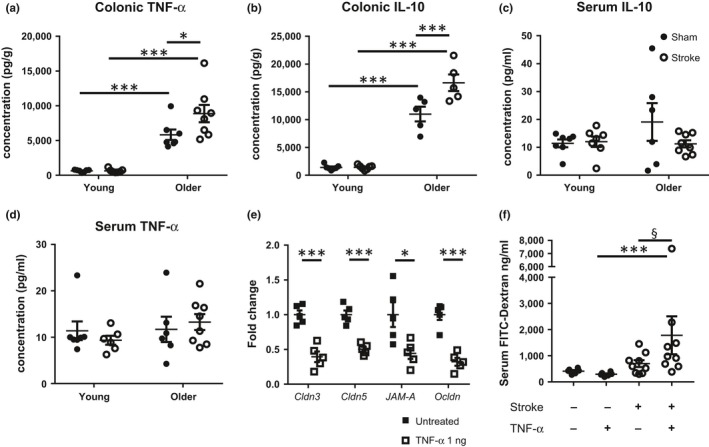Figure 5.

Tumour necrosis factor (TNF)‐α may facilitate the breakdown of colonic barriers poststroke. Protein expression of TNF‐α and IL‐10 in the (a–b) colon and (c–d) serum from young and older mice was quantified 5 hr after mid‐cerebral artery occlusion (MCAO) or sham surgery (n = 5–8/group). (e) Colon cross sections from naïve older mice were treated with recombinant TNF‐α for 1 hr in an ex‐vivo setting, while untreated tissues acted as controls. Gene expression of claudin 3 (Cldn3), claudin 5 (Cldn5), junctional adhesion molecule‐A (JAM‐A) and occludin (Ocldn) was assessed by qPCR and expressed as a fold change relative to untreated older colons (n = 5/group). (f) To examine whether TNF‐α can alter intestinal permeability in vivo, recombinant TNF‐α (20 µg/kg) or saline as control was administered (i.p.) immediately following blood reperfusion to young MCAO and sham‐operated mice. Serum levels of orally gavaged FITC‐dextran were quantified to examine colon permeability. Data represent the mean ± SEM. Significance was determined by one‐way ANOVA with post hoc comparison and Holm–Sidak multiple testing correction. A p‐value ≤ 0.05 was considered statistically significant: *p ≤ 0.05, ***p ≤ 0.001 and § p ≤ 0.1 considered a significant trend
